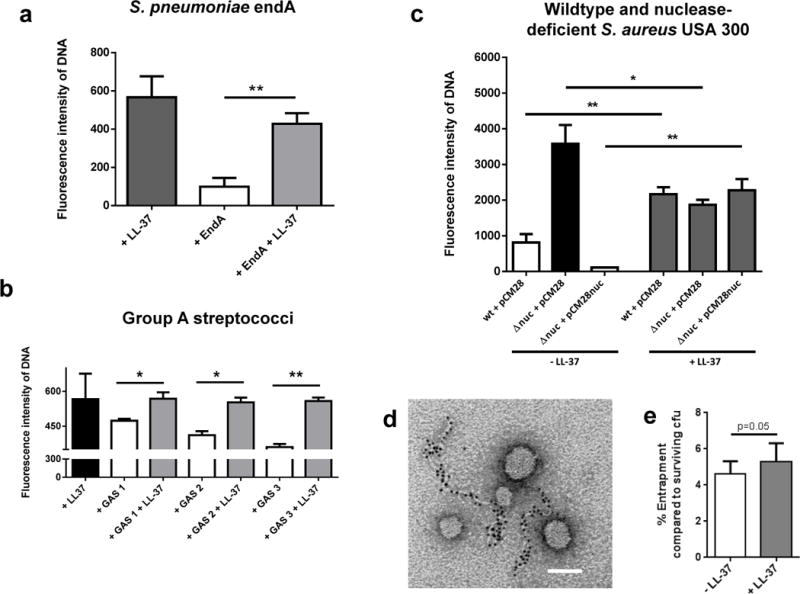Fig. 4.

LL-37 protects host DNA against degradation by nucleases derived from different Gram-positive bacteria: DNA-degradation in the presence or absence of 5 μM LL-37 by purified EndA (a), supernatants of three different group A streptococcal (GAS) strains (b) and S. aureus USA300 LAC (c) using PicoGreen as a marker. In (c), a panel of nuclease (nuc)-deficient mutants and nuclease-producing control strains of S. aureus USA300 LAC strain was used: S. aureus LAC wild type empty vector control (wt + pCM28), nuc-mutant empty vector control (nuc + pCM28) or complemented mutant strain (nuc + pCM28nuc).
Electron micrograph of NETs after degradation with purified micrococcal nuclease: Only small left-over NET-structures that are decorated with gold-labelled LL-37 are visible. All NETs that are not decorated with LL-37 (as partially seen in Figure 1b) have been enzymatically degraded and are not detectable anymore. Bar 100 nm. (d)
Entrapment of S. aureus USA300 LAC strain by NET-releasing neutrophils in the presence of absence of 5 μM LL-37: Percentage of entrapment was calculated compared to total amount of surviving cfu under the respective conditions in the presence or absence of LL-37 (e). All graphs represent the mean ± SEM of minimum 3 independent experiments. * p < 0.05, ** p < 0.005 by t-test.
